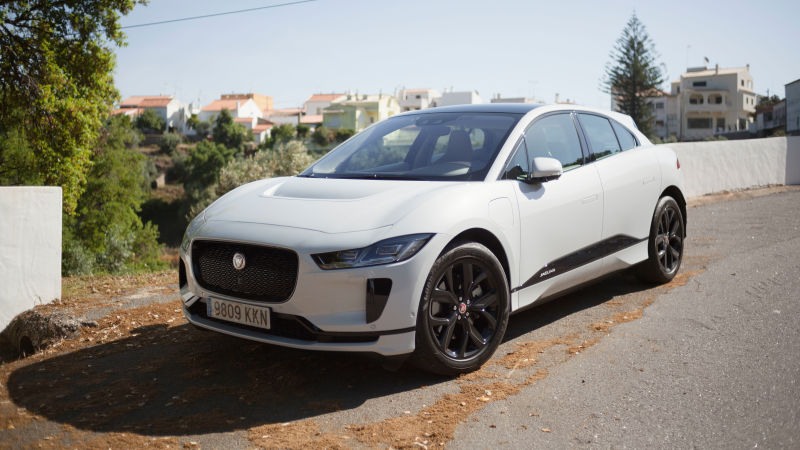
One of the big issues concerning electric vehicles is how pedestrians struggle to hear an oncoming, naturally-silent electric car in the streets. Following my recent first drive of the 2019 Jaguar I-Pace in Portugal last, I think Europe already has this figured out.
The Jaguar I-Pace does not emit any sort of sound effect while it’s driving forward, only a subtle beeping noise when it’s backing up (which comes from the front of the car and is confusingly difficult to hear if you’re in its reversing path). Simulated EV noise was a small concern for the organizers of the drive event I attended in Portugal last week, and a topic of conversation.
Part of the drive took us through the tight streets through the old city part of Lagos, where the sidewalks are barely one-person wide in some areas, or there are none altogether, and the tight corners make for a precarious situation for pedestrians.
The relatively large I-Pace was not in mind when these centuries-old cobble streets were laid out, but at least with a traditional car, especially the rattly older ones that populate the area of Lisbon I was in, there’s a decent chance someone walking could hear it coming. That doesn’t work out so much for EVs.
If you factor in people not paying attention, either by having a conversation or being distracted by their phone, the relative silence of an electric car can be a serious risk.
Advertisement
The common, non-serious solution is a Jetsons-like sound effect, an electric wave noise to symbolize the “future” of EVs and make us all feel like we’re living in the future society we were promised as children. But we all know that would get incredibly annoying as electric cars become more regular and grow in number, especially in urban areas.
But I think I found the solution while walking through Paris. The city’s buses, many of which are hybrid or electric, have a lovely bell chime that drivers seem to trigger at-will when they’re passing through pedestrian-dense areas. You can hear what is sounds like just after the 1:37 mark in the video below.
I think this bus example, or something like it, would be good to apply to the upcoming masses of electric vehicles for a few reasons.
Advertisement
The noise isn’t distracting or obnoxious, but is still enough to get your attention and warn that there’s a big bus on the way and to watch out. It a unique noise that’s enough to stand out, and the choice of a bell ring seems more natural and comforting than an annoying electronic beep or something similar. It’s also significantly different from just a regular honk from a car horn, and a lot less aggressive, too.
What’s also good about the bus bell is its seemingly selective nature. It’s not a constant alert, which would easily get annoying with a fleet of buses constantly ringing. The only thing I would change for EV application is driver control. Instead I would just have a timed chime that plays on a loop of a few seconds, perhaps with a rate increase that goes up as the car drives faster.
It’s also worth keeping in mind that eventually most of these vehicles will presumably come to have some sort of sensor package to detect pedestrians and map out road lanes, perhaps synching the chime to only play when the car is in a pedestrian-heavy area based on the sensor data could be a smart solution to avoid annoyance. The buses also still have a traditional horn, which the cars shouldn’t lose to make sure the driver still has their own way of alerting people.
Advertisement
I won’t say that this isn’t a tough challenge, figuring out exactly what noises EV should make, how loud and how often, having to balance alertness while preventing annoyance and the dangers of noise pollution, and my only advice is to look to the lovely bus chimes of Paris.













